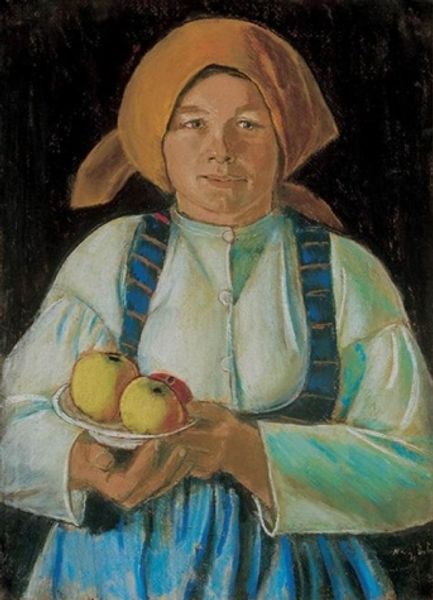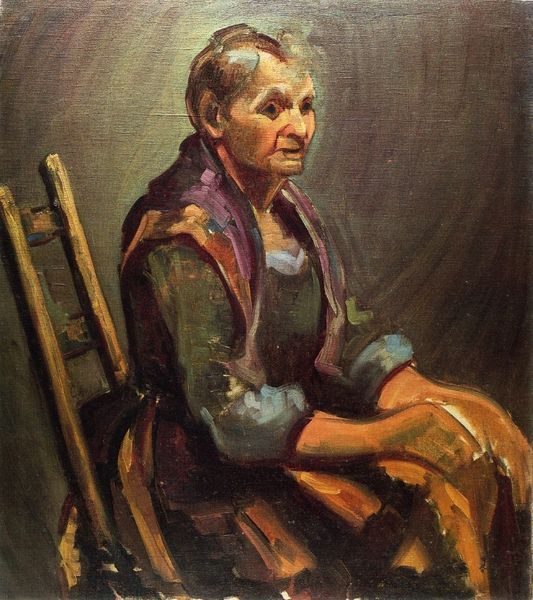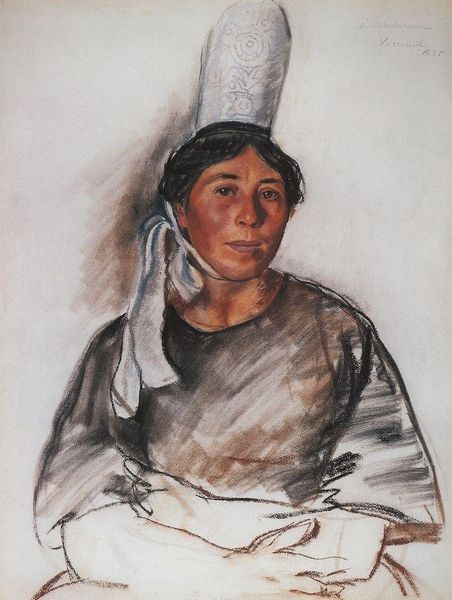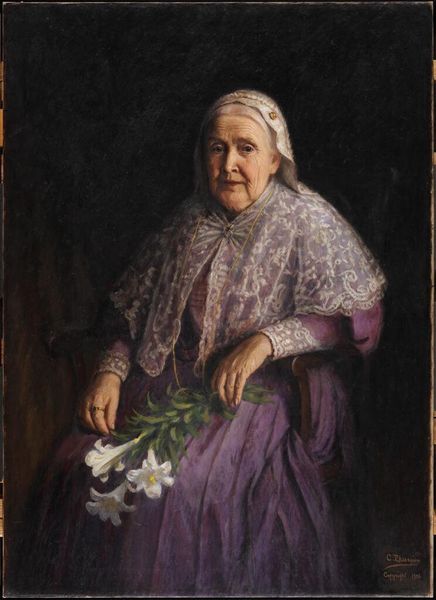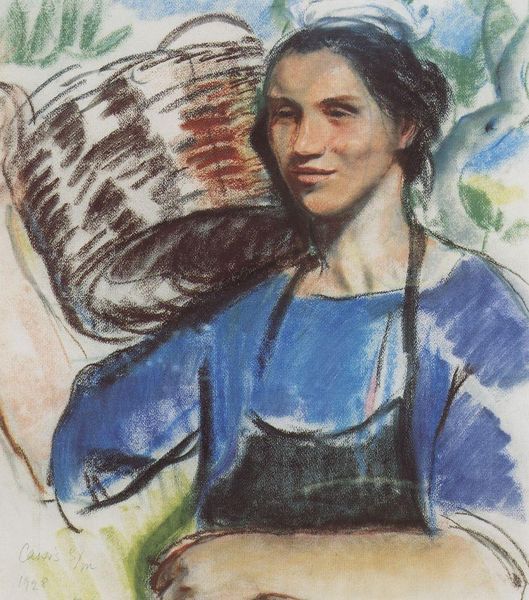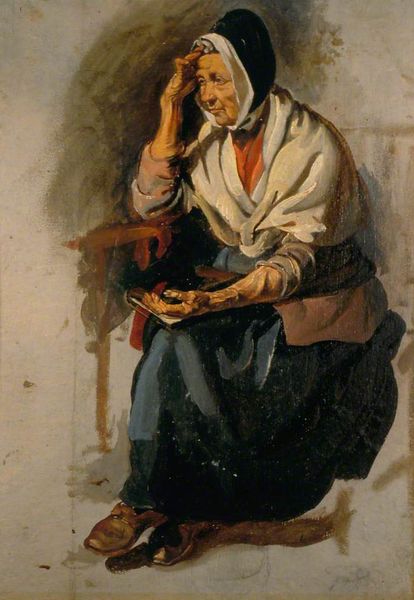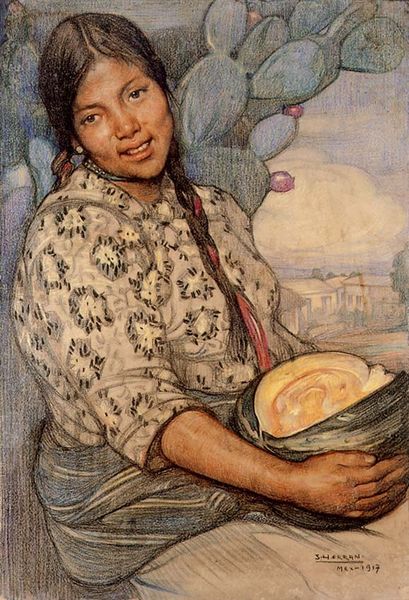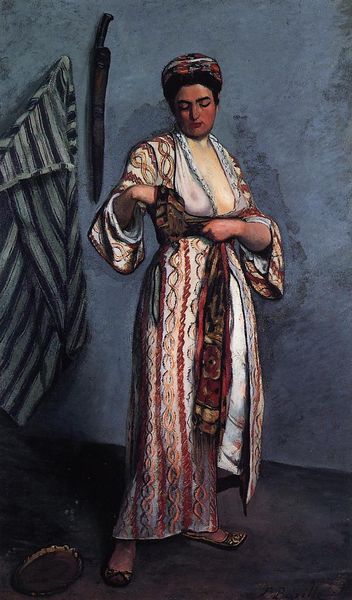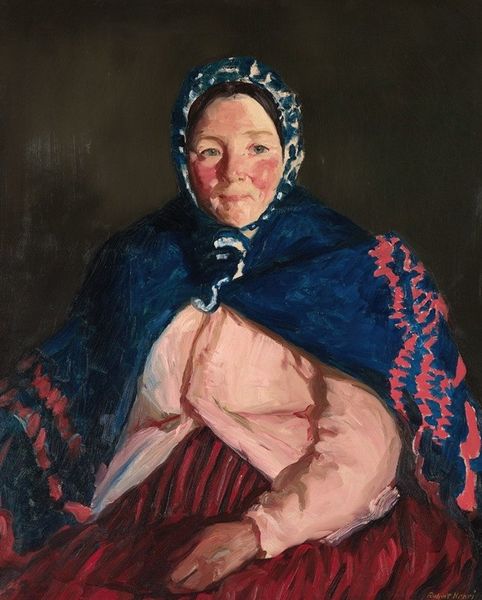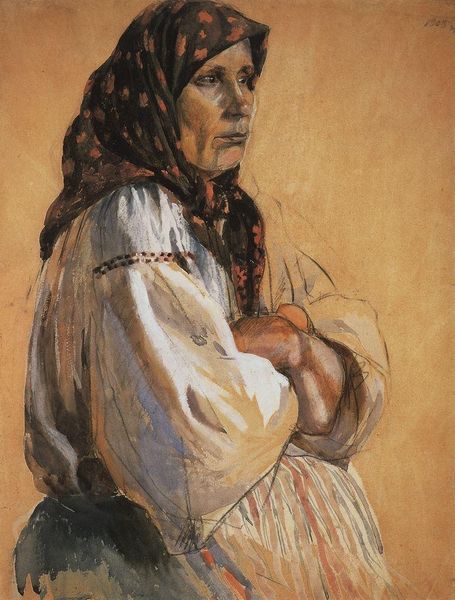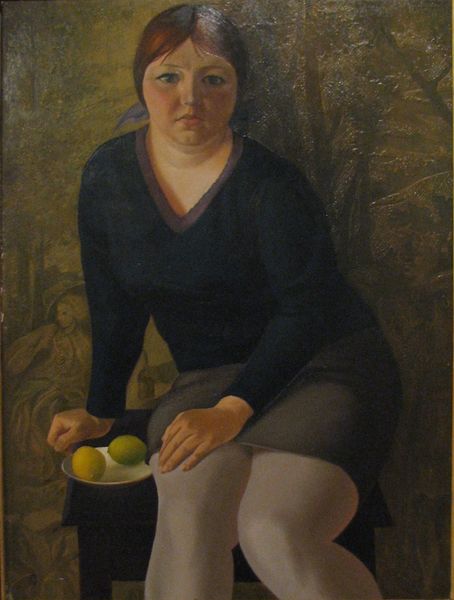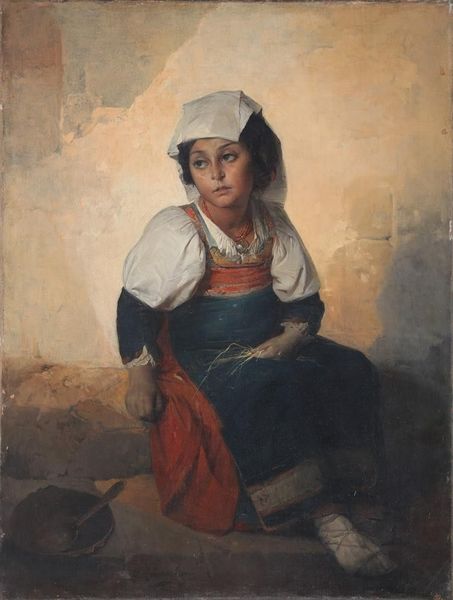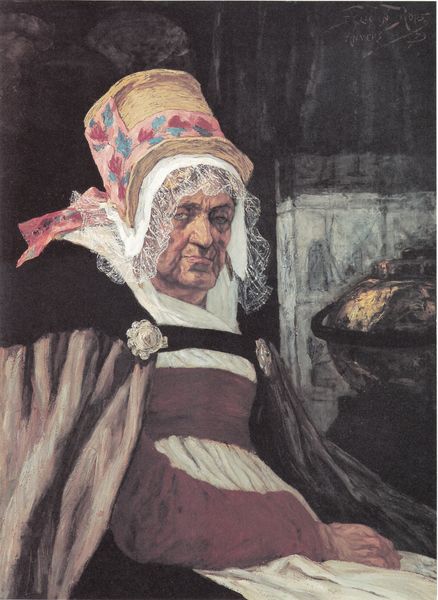
painting, oil-paint
#
portrait
#
painting
#
oil-paint
#
modernism
#
realism
Copyright: Zinaida Serebriakova,Fair Use
Editor: Zinaida Serebriakova's "Merchant Vegetables. Nice," painted in 1931 using oil paints, strikes me as a curious mix of portraiture and still life. What structural elements do you observe that contribute to its unique composition? Curator: The organization of forms is quite deliberate. Note how the artist contrasts the smooth, contained form of the merchant with the abundant disarray of the vegetables. Her posture creates a stable pyramid, whereas the produce at the base offers a chaotic texture. Consider also the light. Editor: The light definitely plays a role, guiding the viewer's eye. How do you see the interplay of color influencing the work? Curator: Indeed, the chroma tells us a story. Earth tones define the background and the subject's complexion, setting off the jewel-toned reds of the tomatoes and the glossy eggplant. This color scheme underscores a connection to nature and highlights the earthiness of the scene. Editor: I hadn’t thought of it that way, focusing on the contrast more than the connection. Curator: What is gained by considering how those contrasts, differences in shapes, hues, and forms contribute to the image as a whole? Editor: Viewing "Merchant Vegetables. Nice" through the lens of pure composition really reframes how I appreciate the painting. Thanks! Curator: Indeed. Close looking reveals how intertwined form and meaning truly are, altering perception through structural awareness.
Comments
No comments
Be the first to comment and join the conversation on the ultimate creative platform.
